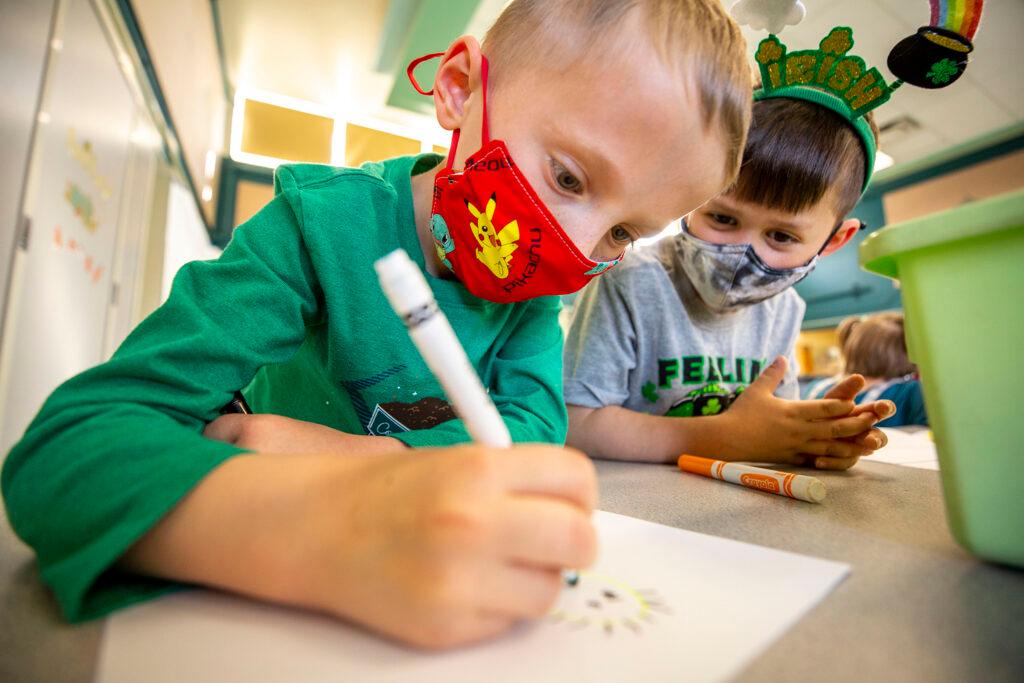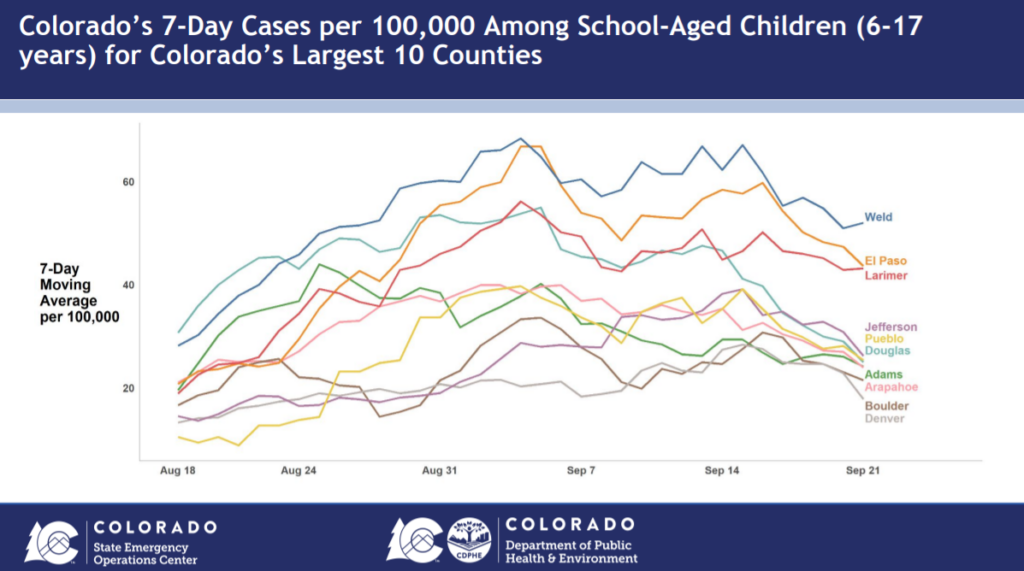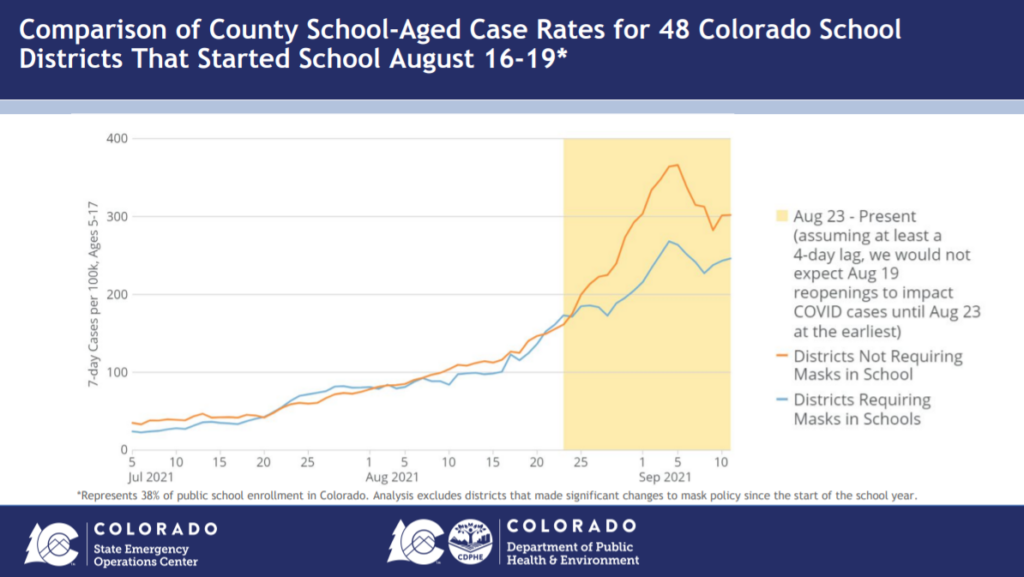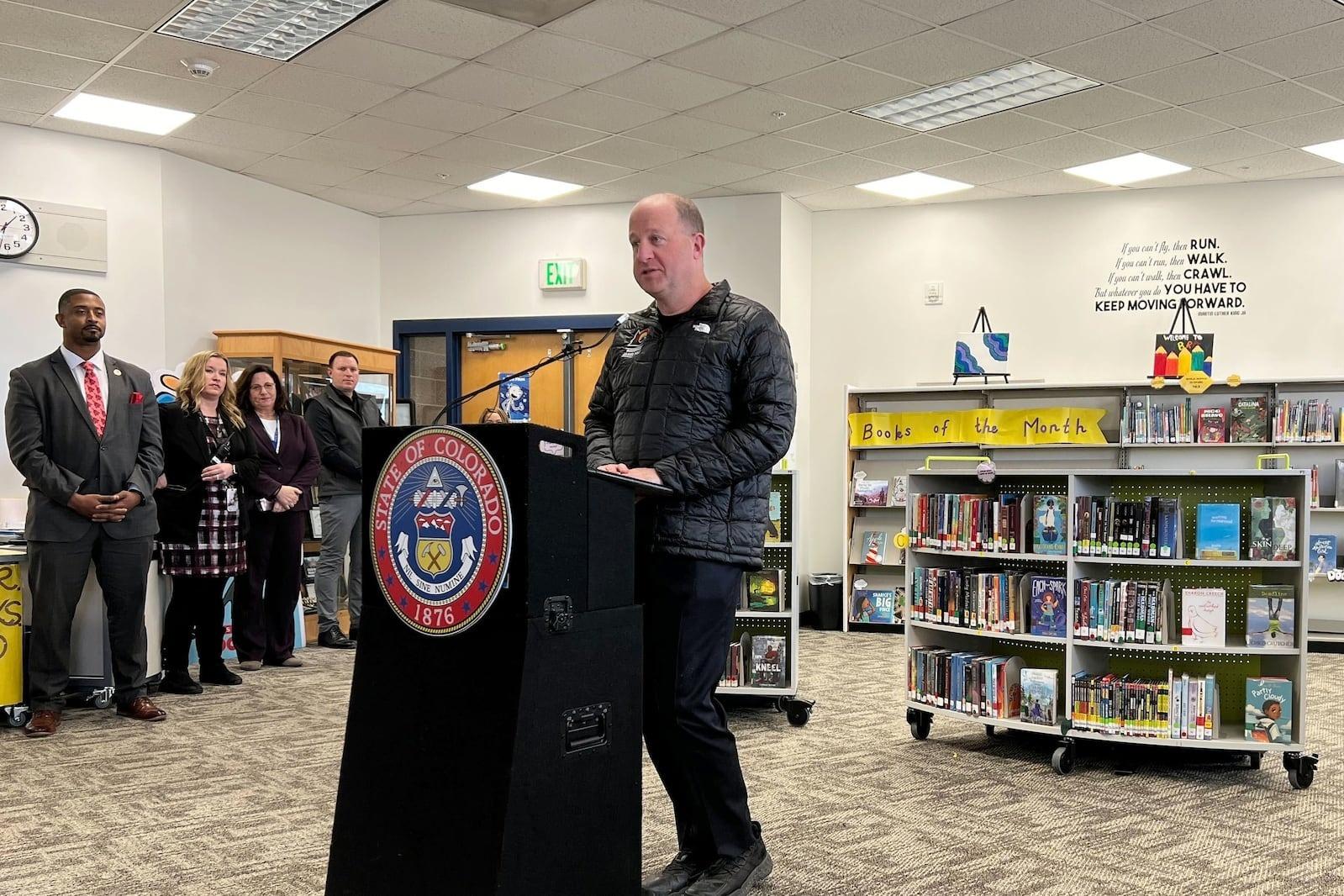
Vaccinations and masks are protecting kids from COVID-19, according to the latest data released by state health officials.
During an update with reporters Thursday, Dr. Rachel Herlihy, the state epidemiologist, gave a status report on the pandemic, focusing mostly on children.
“We see this clear correlation between high vaccination rates and low case rates. And that's true not just for the adult population, but also holding true for our children,” Herlihy said.
Children ages 6-11 have the highest COVID case rate in Colorado right now.
The state health department, the Colorado Department of Public Health and Environment, analyzed the latest virus trends and generated a series of slides.
Children from 6-11 now have the highest COVID-19 case rate per 100,000 in the state, according to the 7-day moving average. Those Coloradans 12-17 are next, then adults, with the youngest people, those 0-5, having the lowest case rates.
Department researchers charted cases by Colorado’s 7-day moving average per 100,000 people among school-aged children (6-17 years old) for the state’s 10 largest counties, which are all located along the Front Range.
Weld, El Paso and Larimer counties had the highest rates, while Denver, Boulder and Arapahoe had the lowest. In the middle: Jefferson, Pueblo, Douglas and Adams.

It compared 14-day case rates with vaccination rates among children 12-17, who are now eligible for the vaccine, in those same counties and found the counties with the highest vaccination rates had the lowest case rates among that age group. And counties with lower vaccination rates among those children had higher case rates in that group.
The state, and individual counties, keep data by different age ranges, making comparisons difficult. But, for example, Weld County, which has the highest case rates among its youth among any of the counties compared, has vaccinated just 44.9 percent of kids age 12 to 15 with at least one dose of vaccine. On the other end, Boulder County, with the second-lowest youth case rates, has vaccinated 78 percent of youth 12-14 with at least one dose.
“So this could certainly be one reason that we are seeing differences in pediatric rates across the state right now,” said Herlihy. “We know that those rates are going to be higher in counties where we're seeing lower vaccination rates among our children.”
Masks are proven to help prevent the spread of the virus, but their presence in schools has become politically divisive.
Another chart documented the impact of masks in schools. The issue has sparked disagreement in some districts, pitting some parents, educators, and health officials who say research shows they prevent the spread of the virus, versus others who view it as a violation of one’s personal liberty and question that science.
The health department compared school-age case rates for 48 Colorado school districts that started school Aug. 16-19. It found virus rates began to rise a few days after the start of school, with rates clearly growing higher in districts not requiring masks versus districts that did. That gap had widened considerably within a week and remained through Sept. 10.

The data gathered so far show “a clear impact that masks are having in decreasing transmission in our school settings,” Herlihy said.
“I also want to say that we know that masks are of course not just important in school settings, (but are also) incredibly important outside of schools as well,” Herlihy said.
The data underscore two key arguments public health officials and epidemiologists have been making for months: that vaccinations and masks work.
“We do see that case rates among the pediatric population that is vaccine eligible tend to be higher in those counties where the vaccination rate among those vaccine eligible children is lower,” Herlihy said. “And then also we see that rates tend to be higher in school districts where masks are not in place.”
In Weld County, Greeley-Evans District 6 communications head Theresa M. Myers said the district introduced a mask mandate for grades pre-K to 8 three weeks ago and saw a noticeable impact on reducing school disruptions caused by COVID-19 cases.
"It certainly has helped with reducing the amount of quarantines we have seen," Myers said by email.
- Colorado Wants To Send Free Rapid COVID Tests Right To Your Home. Here’s How To Sign Up
- Colorado Launches New Community Vaccination Sites Ahead Of Biden’s Employer Vaccine Mandate
- Most Colorado Students Now Attend Schools With Mask Mandates
- Unvaccinated Coloradans Are Much More Likely To Be Hospitalized And Die Due To COVID, According To New State Data
Colorado to date has avoided the worst hospital conditions of the crisis.
Some states, especially in the south and more recently in the west states, like Idaho and Alaska, have been overwhelmed by COVID-19 cases. That surge has pushed hospital systems to their limits, causing severe staffing challenges and the implementation of measures to ration and triage health care.
It’s also true that the case rates among the youth in all the Front Range counties are well below the state’s overall case rate, which now stands at 175.5 cases per 100,000 over the last seven days, according to the federal Centers for Disease Control and Prevention.
Herlihy credited the willingness of Coloradans to get vaccinated as critical to preserving hospital capacity.
“I think it is certainly notable that for the last several weeks, even months, cases have been lower in Colorado, both in the adult population and in the pediatric population,” she said. “I think part of that is because we have higher vaccination rates. I think there's a clear association between communities that have higher vaccination rates and lower case rates.”
Overall, Colorado’s fifth wave seems to be plateauing, but Herlihy said a clear fall trend has not yet emerged.
“I think we're at a pretty unstable place right now in this plateau, difficult to know if we're going to see a continued decrease in cases, or if we could potentially see an increase in cases as we move further into the fall,” she said.
Incident commander Scott Bookman characterized COVID-19 hospitalizations as “still incredibly high,” fluctuating between 875 and 900.
“Eighty percent of those who are currently hospitalized are unvaccinated,” said Bookman, who encouraged Coloradans to get the vaccine. “It's safe, it's free, it's easily available.”
Some of those hospitalized with COVID-19 are children. CDPHE released data Thursday showing that of 9,206 people hospitalized so far in September, 64 are children under the age of 17.
This story was updated Sept. 24 with comments from Greeley-Evans School District 6.









